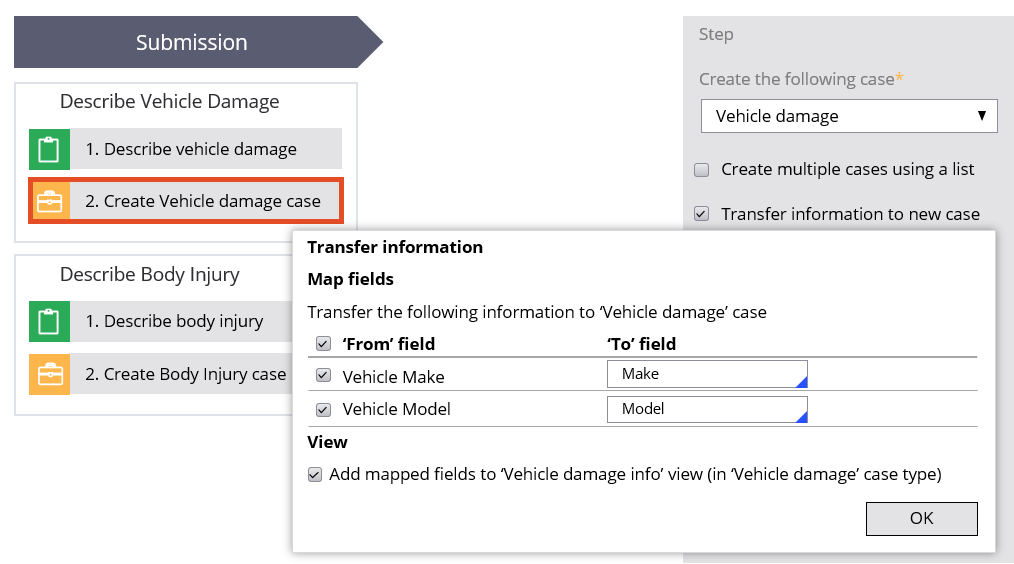
Child cases
Case hierarchy
Complex business transactions may require the creation of multiple cases. For example, an auto insurance accident claim must be able to handle additional claims if the accident resulted in vehicle damage or physical injury. Based on this requirement, the Accident Claim case must be able to generate separate Vehicle Damage and Body Injury cases if necessary. In Pega Platform™, you can model case relationships with a case hierarchy that contains top-level cases and child cases.
The Accident Claim case is a top-level case, which is a case that does not have a parent case but can become a parent of other cases. Vehicle Damage and Body Injury are child cases, which represent work that must be completed to resolve the parent. A parent case that creates multiple child cases allows for work to be processed in parallel. Different parties with different expertise can handle each child case. When processing child cases in parallel, the parent case needs to wait until a child case is complete before the parent case can be resolved.
Child cases are beneficial in situations where you want to:
- Model work that different parties perform
- Model work that follows different reporting options
- Model work that follows different time frames
- Model work that is common to multiple case types
A customer service representative, an adjustor, and a repair shop can handle the Vehicle Damage child case. Meanwhile, a medical claim specialist and certain medical providers can handle the Body Injury child case.
Implementing a business process in a separate case type also allows you to reuse the case type as needed. For example, claims for both automobile and property insurance may involve a body injury claim. By implementing body injury claims as a separate case type, you can use the body injury case type with both automobile and property claims.
Check your knowledge with the following interaction:
Create Case step
To add a child case to a case type, add a Create Case automation step to the case life cycle. When encountering the Create Case step, Pega Platform creates an instance of the specified case type.
Note: Dev Studio gives you additional configuration options for the Create Case step. The created case can either be a top-level case or child case. Additionally, multiple child cases can be created. To learn more about these options, see Creating contextual cases.
Data propagation
When creating a child case, you can also specify the information to copy from the parent case to the child case through a process known as propagation. You identify the fields in the parent case to copy from and copy the values to fields identified in the child case. This configuration is performed on the Create Case step.
If the data in the child case should represent the data at the time of the child case creation, data propagation is appropriate. For example, in the Accident claim case, you can propagate data about the accident from the parent case to the Vehicle Damage and Body Injury child cases because the information about the accident does not change.
If the information should remain synchronized with the parent case, and the data may change on the parent case, then it is more appropriate to reference the data in the parent case. For example, in the travel application, customers create an itinerary and reservations for flights, hotels, and vehicle rentals; child cases handle each reservation. It is appropriate to reference the data from the parent case because customers may make changes to their travel itinerary.
Note: Data references require advanced configuration in Dev Studio.
This Topic is available in the following Modules:
If you are having problems with your training, please review the Pega Academy Support FAQs.
Want to help us improve this content?

